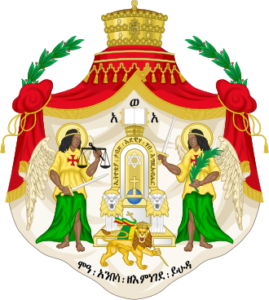orders of chivalry
ethiopian empire
The Aksumite empire in Africa was originally a Semitic Jewish kingdom based at Axum (from around the second century BC), and founded, according to legend, by Menelik, son of King Solomon of Israel and the queen of Sheba. It seems much more likely that it was formed in the second century BC by Jewish settlers escaping from Elephantine in Egypt after their temple was destroyed, although there is evidence of a Semitic-speaking presence from at least as early as 2000 BC. Surprisingly (or perhaps not), a study in 2012 of the DNA of more than two hundred Ethiopians found that their ancestors intermixed with either Egyptian, Israeli, or Syrian populations around 1000 BC, precisely at the time that Sheba was supposedly at its height, lending much-needed weight to the story of King Solomon and Sheba.
The country is also known as Abyssinia, which probably originates from the Egyptian name of Habashat. The name ‘Ethiopia’ is Greek, meaning ‘burnt faces’, a collective name for all dark-skinned people south of Egypt, although this is now disputed as the Book of Aksum, a Ge’ez chronicle first composed in the fifteenth century, states that the name is derived from ”Ityopp’is’, a son (unmentioned in the Bible) of Cush, son of Ham who, confusingly, also founded the city of Axum, according to legend. The Greek ‘Aethiopia’ was a translation of the original Hebrew ‘Kush’ which is generally used to refer to a kingdom to the north of what is now recognized as being Ethiopia.
Falling foul of colonial influence in Africa in the nineteenth century, Ethiopia’s kings were weakened by invasions by Egypt, Sudan, and Italy. In 1974 they were overthrown by one of their own, and a dictatorship was formed. Retaining their claim to governance over Ethiopia, the Solomonic dynasty continues to hold its claim to a return to power emperors established a presence, but they are not officially recognized by the current government of Ethiopia.
The Crown Council of Ethiopia is the Constitutional Body which advises the reigning Emperors of Ethiopia and, during an interregnum (such as now), actually acts on behalf of the Crown. The Council’s members are initially appointed by an Emperor, and subsequently (during an interregnum) sustained in their posts or replaced under the direction of the President of the Council.
Charitable activities
On July 28, 2004, the Crown Council redefined its role by redirecting its mission from the political realm to a mission of cultural preservation, development and humanitarian efforts in Ethiopia.
A main effort for HIH Prince Ermias is the Water Initiative for Africa. Dedicated to providing clean drinking water for all Africans, the Water Initiative for Africa, working in conjunction with collaborative partners, has developed a unique series of water purification units which eliminate of bacteriological and viral contaminants in water. This coalition has evolved into a strategic initiative intent to working to provide water and power solutions for relief efforts. The objective is to make the entire process of relief and development in Africa more productive. More information can be found at www.argonautwater.com/WIA.htm
The Crown is also Patron of The Royal Ethiopian Geographical Society, which is being developed to gather and research all material pertinent to Ethiopia’s geography, geophysics, sociological history, and so on into a central repository, guided by Ethiopian academics, to serve to make Ethiopia better known to Ethiopians and to the world, and to assist in the husbandry of Ethiopia’s natural resources.
chivalric orders
The Imperial Crown Council bestows decorations upon those who have made worthy contributions to Ethiopia, its people and culture, or, in certain instances, upon individuals who have contributed to the cause of African culture and unity. In keeping with Ethiopia’s multicultural heritage, most of these decorations are bestowed without respect to the conferee’s religion or nationality. There are both male (knights) and female ranks (dames) in most of the orders.
Below are the Imperial Honors bestowed on behalf of the Imperial Crown of Ethiopia, through the Imperial Crown Council of Ethiopia
order of king solomon
Founded in 1874 as part of the Order of Solomon’s Seal (see below) and bestowed in one rank (knight or dame), the Order of King Solomon is usually reserved to monarchs and heads of state. It is a rather ornate decoration suspended from a collar chain.
The Order of Solomon is limited to the Emperor, Empress, Crown Prince, Crown Princess, President of the Crown Council, and Viceroy of Ethiopia, and reigning monarchs of any religion.
Recipients have included Shah Reza Pahlavi of Iran, and Emperor Hirohito of Japan. The Order was also bestowed, in 1945, on King Gustav V, of Sweden, and on Swedish Crown Prince Gustaf Adolf.
George V, of the United Kingdom, also received the Collar, in 1935. The Order presented to King George V may have been the most ornate award produced.
British sovereigns King George VI and Queen Elizabeth II have also received the Order, as did Queen Juliana of the Netherlands.
Holders of the Order may identify themselves with the use of the post-nominal initials KS or DS (Knight or Dame of the Order of Solomon).
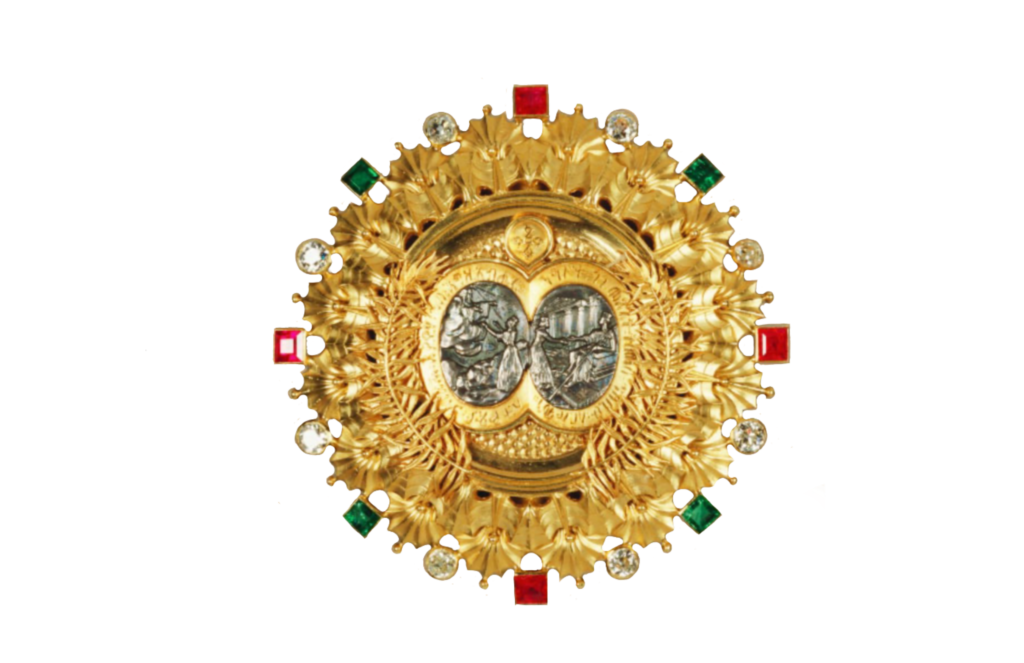
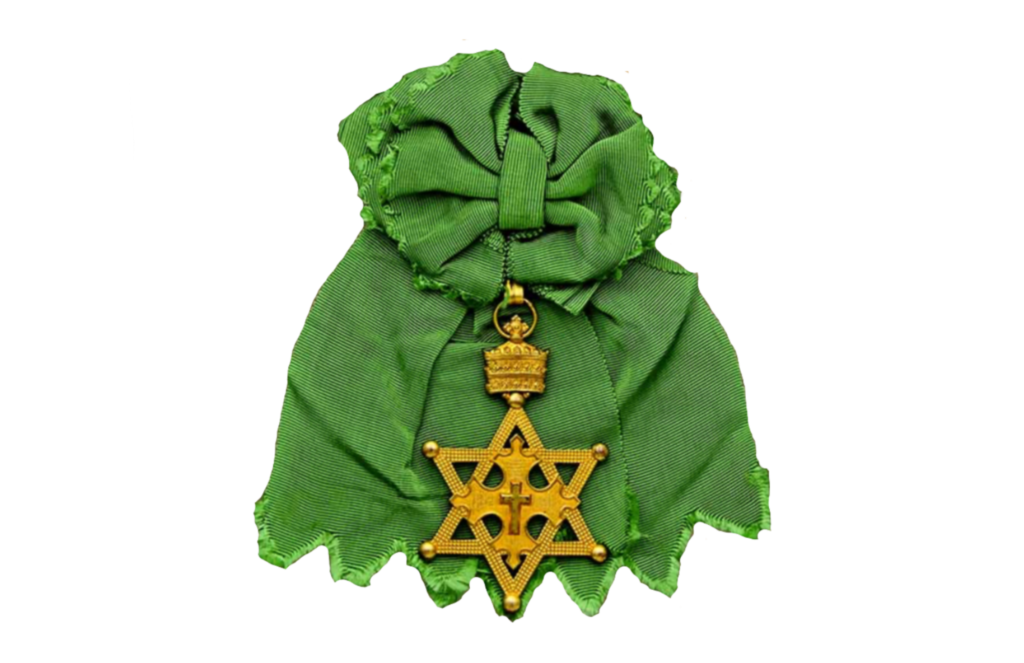
order of solomon's seal
Established by Emperor John IV in 1874, the Order of Solomon’s Seal was at first bestowed in several ranks, though today it is usually conferred in the rank of knight grand cross. In 1922, it was divided to form the Order of King Solomon (see above) and the present Order of King Solomon’s Seal. The insignia, a cross within the Seal of King Solomon (‘Star of David’), is suspended from a deep green ribbon.
Order of Solomon’s seal was frequently worn by Ethiopian sovereigns. Originally it was reserved for members of the Imperial Family, heads of foreign states, and to individuals who had rendered particularly meritorious service to the Throne. Among the foreign heads of state to receive the Order was King Paul of Greece, who was invested with it in 1959 during the visit of Emperor Haile Selassie to Greece. The Order was bestowed on princes of the dynasty and foreign princes. It was also always bestowed on the Abuna of the Ethiopian Orthodox Church and very occasionally on international figures, including US President Dwight Eisenhower, of the United States, and Earl Mountbatten of Burma. The Order was presented in its original form — that is, the design instituted by its founder, King Yohannes IV — to King Edward VII of the United Kingdom. The Order in its original form had also been bestowed upon Queen Victoria in 1897 for her Diamond Jubilee.
Holders of the Order may identify themselves with the use of the post-nominal initials KSS (Knight of the Order of Solomon’s seal) or DSS (Dame of the Order of Solomon’s seal)
order of the queen of sheba
Empress Zawditu founded this order for ladies in 1922, but it was soon extended to gentlemen in several ranks. The insignia is a green and purple star of Solomon bearing, in the center, the cipher of Queen Makeda suspended from a purple and pale green ribbon. Recipients of the Order with collar include HM Queen Mary (wife of King George V, of the United Kingdom) in 1935, HRH the Duke of Edinburgh of the United Kingdom, President Charles De Gaulle of France, President Dwight D. Eisenhower of the United States, and Emperor Bokassa of Central African Empire. Queen Frederica, of Greece, was invested with the Grand Cross of the Order in 1959, during Emperor Haile Selassie’s visit to Greece. HRH Prince Mohamed bin Talal, of Jordan, was invested with the Order by Emperor Haile Selassie. Prince Bernhard of the Netherlands received the Order with Collar. The Order continued to be conferred, as well, on female royalty: princesses of the Imperial Family and foreign princesses. In recent years, the Sheba has been given to dignitaries of the level of Governor-General in some Commonwealth states. Holders of the Order of the Queen of Sheba may use the post-nominal initials GCQS (Grand Cross of the Order of the Queen of Sheba).
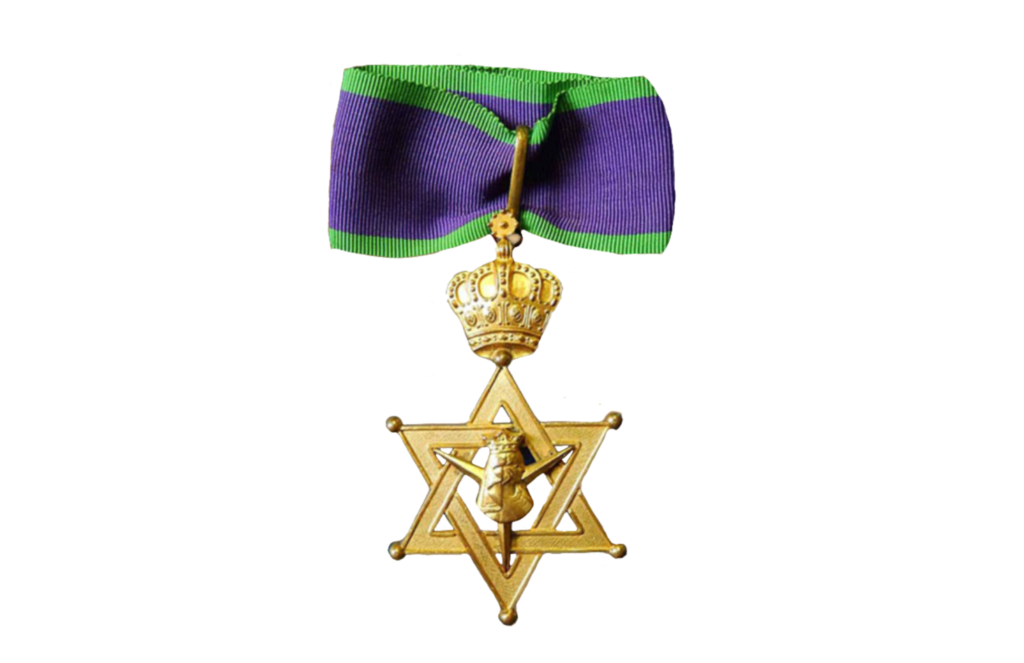
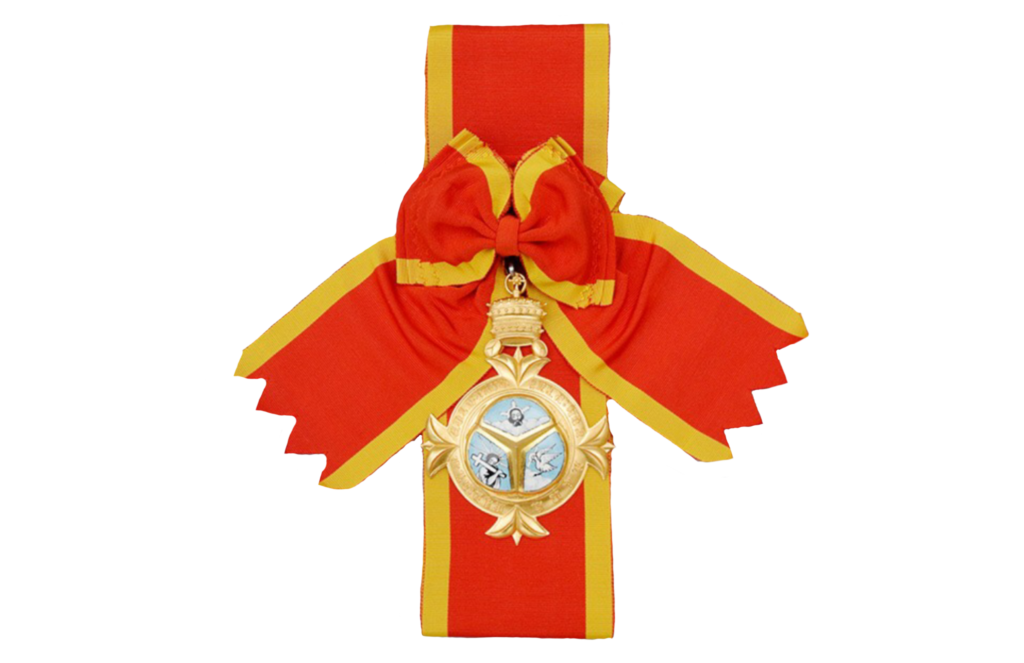
order of the holy trinity
Established in 1930 on the occasion of the coronation of Emperor Haile Selassie, this order was initially bestowed in several ranks but today is awarded almost exclusively in the grade of knight grand cross. The decoration is a gold medallion displaying the Holy Trinity on a sky blue enameled background, suspended from a red and gold ribbon.
The Order is bestowed by the Crown on very distinguished individuals, Ethiopian and foreign, who have served the Council in a variety of roles as Special Advisors and as Envoys. The Order has also been given to Chamberlains and Chancellors of Royal Houses. The post-nominal identifying initials for this order are GCHT. Holders of the Grand Collar append an asterisk to the initials — GCHT* — to signify the additional honor.
The Order of Emperor Menelik II: Founded in 1924 to honor the Emperor of the same name, this order was often referred to as the “Order of the Lion” for the noble beast depicted in the center of its green and red cross. The insignia is suspended from a deep gold ribbon lined at its edges in red and green, thus representing the Ethiopian flag. The order is bestowed in several ranks.
Order has always been in five grades of Knight Grand Cross, Knight Commander, Commander, Officer and Member. It is probable that the design of the Order was influenced by the Montenegrin Order of Danilo which had passed into abeyance with the fall of the kingdom and its absorption into the United Kingdom of Yugoslavia.
The various grades of the Order are represented by the use of the following post-nominal initials: GCEM (Grand Cross), GOEM (Knight Commander), CEM (Commander), OEM (Officer), and MEM (Member)
The Order of Emperor Menelik II
Founded in 1924 to honor the Emperor of the same name, this order was often referred to as the “Order of the Lion” for the noble beast depicted in the center of its green and red cross. The insignia is suspended from a deep gold ribbon lined at its edges in red and green, thus representing the Ethiopian flag. The order is bestowed in several ranks.
Order has always been in five grades of Knight Grand Cross, Grand Officer, Commander, Officer, and Member. It is probable that the design of the Order was influenced by the Montenegrin Order of Danilo which had passed into abeyance with the fall of the kingdom and its absorption into the United Kingdom of Yugoslavia.
The various grades of the Order are represented by the use of the following post-nominal initials: GCEM (Grand Cross), GOEM (Grand Officer of the Order), CEM (Commander), OEM (Officer), and MEM (Member)
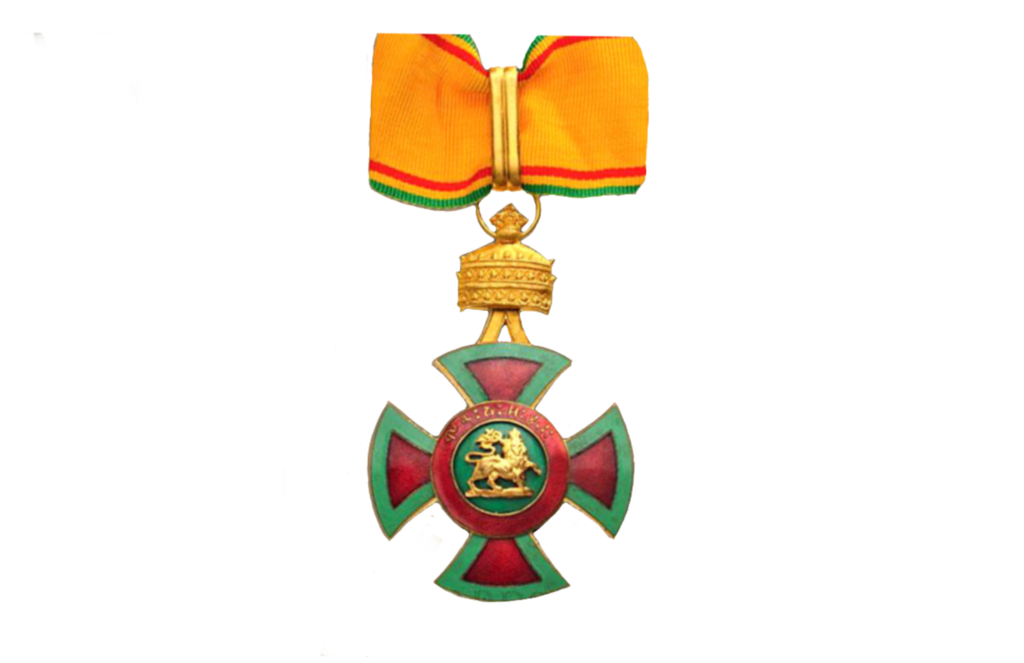
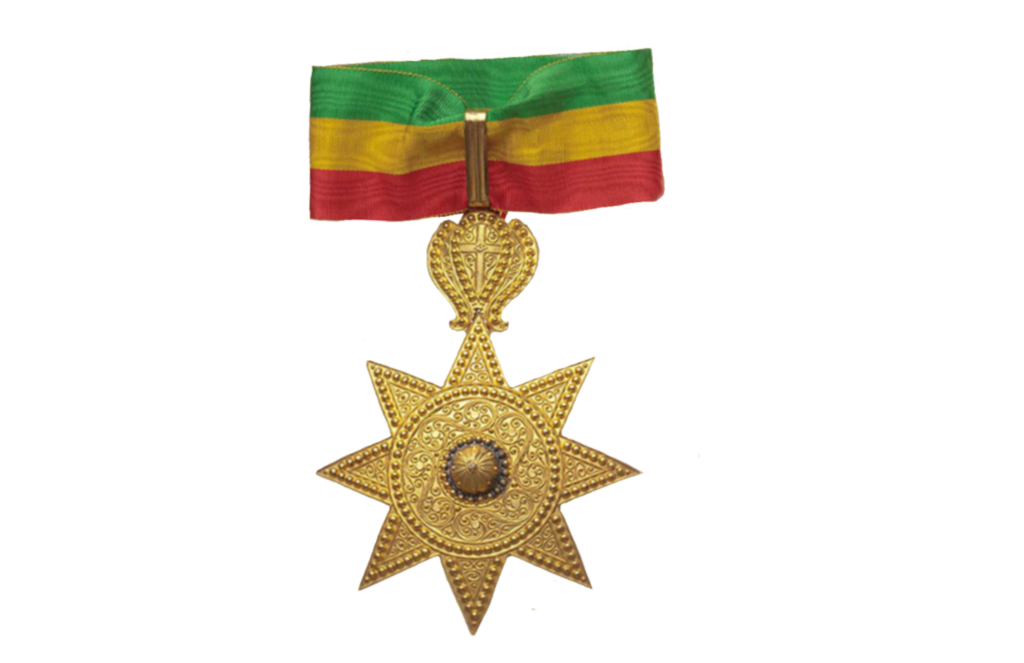
Order of the star of ethiopia
This order was founded by Emperor Menelik II in 1885 based on an older decoration. The Order of the Star is a multi-pointed gold filigree star set with jewels, suspended from a ribbon of red, gold and green. Bestowed in several ranks. The First Class was the Grand Cross; the Second Class grade of Grand Officer was Second Class avec plaque; the Second Class grade of Commander, was without the plaque; the Third Class grade of Officer was with rosette; the Third Class grade of Chevalier (or Member, in the English parlance) was without the rosette. It would seem that there was a conscious effort at the time to emulate the French structure as indicated by the Legion d’Honneur. Holders of the various grades of the Order may identify themselves by the use of the post-nominal initials: GCSE (Grand Cross), GOSE (Grand Officer), CSE (Commander), OSE (Officer), MSE (Member).
order of the ethiopian lion
The Order of the Ethiopian Lion has its origins in the Order of Menelik II and acquired Insignia of its own in March 1996 on the one-hundredth anniversary of the Victory of Adwa. The Order may be said to rank equally with the Order of Emperor Menelik II, from which it derived, and the Order of Haile Selassie I. The decoration of the Order of the Ethiopian Lion is a circular medallion bearing, in its center, the lion of Ethiopia. The ribbon is red, yellow and green. As it is not based on a cross, this order’s design is not considered offensive to Muslims. It is bestowed in several ranks. The Order comprises five grades: Knight Grand Cordon, Grand Officer, Commander, Officer and Member. The Order is bestowed for distinguished and meritorious service to the Crown Council and is under the personal Grand Mastership of Prince Ermias Sahle-Selassie Haile-Selassie. The Order has been accorded to Christians and Moslems and thus departs from most other Imperial Orders in that there is no overt religious symbolism. Ambassadors, Ministers, Staff Officers, Academicians and other professionals have received the Order with a preponderance of conferrals to Africa, the Caribbean and Middle East. Holders of the order may identify their award with the use of the following post-nominal initials: GCEL (Knight Grand Cordon); GOEL (Grand Officer); CEL (Commander); Officer (OEL); and Member (MEL).
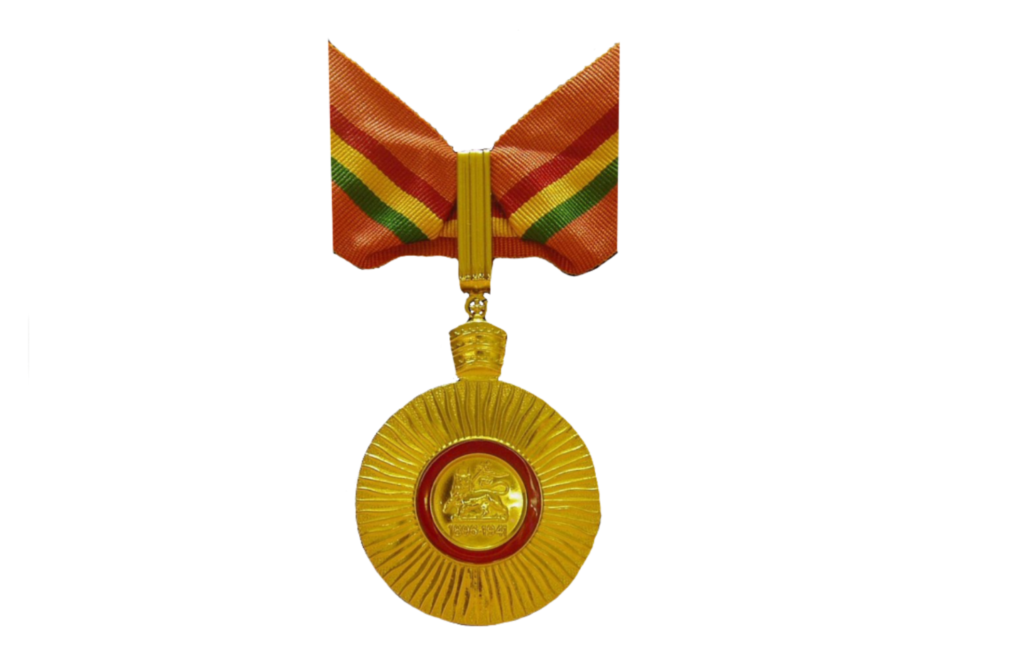
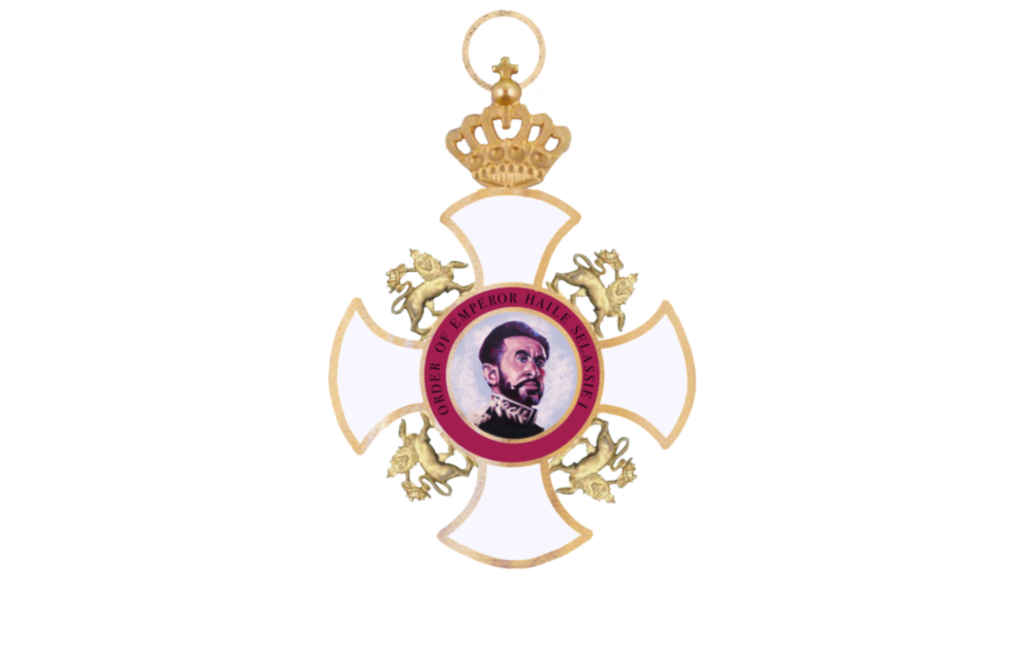
Order of Emperor Haile Selassie I
Founded by Emperor Amha Selassie I in 1992, to commemorate the centenary of the birth of his august predecessor, this order is bestowed upon Africanists and others in several ranks. The decoration is a cross enameled white bearing in its center a likeness of Haile Selassie, suspended from a blue ribbon edged in the Ethiopian colors. The Order is primarily intended to recognize outstanding Pan-Africanists and contributors to Pan-African heritage, and ranks equally with the Order of the Menelik II in precedence. In particular, the Order has been conferred on African kings and presidents and on African and Caribbean prime ministers.
The internationally acclaimed musician Bob Marley (Birhane Selassie) received the Order posthumously, along with the title of bitwoded, which means “beloved”.
Holders of the Grand Cross rank of the Order may use the post-nominal initials GCHS; holders of the normal rank of the Order may use the post-nominal initials OHS.
This section has been created with the approval and guidance of the Crown Council of Ethiopia. The Crown Council, acting on behalf of the Imperial Crown, is dedicated to preserving the unique culture of Ethiopia while striving to improve the quality of life for the its citizens and greater Africa as a whole. To learn more, please visit the Crown Council of Ethiopia’s website at: https://www.ethiopiancrown.org
